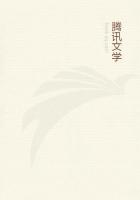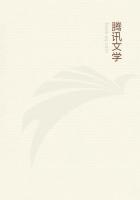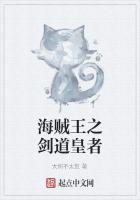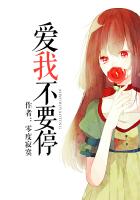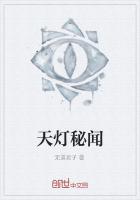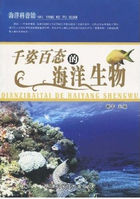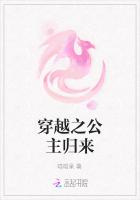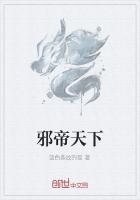A smaller, weaker species (Circaea alpina), found in cool, moist woods, chiefly north, has thin, shining leaves and soft, hooked hairs on its vagabond seeds.Less dependence seems to be placed on these ineffective hooks to help perpetuate the plant than on the tiny pink bulblets growing at the end of an exceedingly slender thread sent out by the parent roots.
AMERICAN SPIKENARD; INDIAN ROOT; SPIGNET
(Aralia racemosa) Ginseng family Flowers - Greenish white, small, 5-parted, mostly imperfect, in a drooping compound raceme of rounded clusters.Stem: 3 to 6 ft.
high, branches spreading.Roots: Large, thick, fragrant.Leaves:
Compounded of heart-shaped, sharply tapering, saw-edged leaflets from 2 to 5 in.long, often downy underneath.Lower leaves often enormous.Fruit: Dark reddish-brown berries.
Preferred Habitat - Rich open woods, wayside thickets, light soil.
Flowering Season - July-August.
Distribution - New Brunswick to Georgia, west to the Mississippi.
A striking, decorative plant, once much sought after for its medicinal virtues - still another herb with which old women delight to dose their victims for any malady from a cold to a carbuncle.Quite a different plant, but a relative, is the one with hairy, spike-like shoots from its fragrant roots, from which the "very precious" ointment poured by Mary upon the Saviour's head was made.The nard, an Indian product from that plant, which is still found growing on the distant Himalayas, could then be imported into Palestine only by the rich.
The wild spikenard, or false Solomon's seal, has not the remotest connection with this tribe of plants.Inasmuch as some of the American spikenard's tiny flowers are staminate and some pistillate, while others again are perfect, they depend upon flies chiefly - but on some wasps and beetles, too - to transfer pollen and enable the fertile ones to set seed.How certain of the winter birds gormandize on the resinous, spicy little berries! A flock of juncos will strip the fruit from every spikenard in the neighborhood the first day it arrives from the North.
The WILD or FALSE SARSAPARILLA (A.nudicaulis), so common in woods, hillsides, and thickets, shelters its three spreading umbels of greenish-white flowers in May and June beneath a canopy formed by a large, solitary, compound leaf.The aromatic roots, which run horizontally sometimes three feet or more through the soil, send up a very short, smooth proper stem which lifts a tall leafstalk and a shorter, naked flower stalk.The single large leaf, of exquisite bronzy tints when young, is compounded of from three to five oval, toothed leaflets on each of its three divisions.The tiny five-parted flowers have their petals curved backward over the calyx to make their refreshments more accessible for the flies, on which they chiefly rely for aid in producing those close clusters of dark-purple berries on which migrating birds feast in early autumn.By these agents the plant has been distributed from Newfoundland to the Carolinas, westward from Manitoba to Missouri, which is not surprising when we remember that certain birds travel from the Gulf of Mexico to the Great Lakes in a single night.While the true sarsaparilla of medicine should come from a quite different herb that flourishes in Mexico and South America, this one furnishes a commercial substitute enormously used as a blood purifier and cooling summer drink.Burrowing rabbits delight to nibble the long, slender, fragrant roots.
The GINSENG (Panax quinquefolium; Aralia quinquefolia of Gray)found in rich woods from Quebec to Alabama, and westward to Nebraska - that is, where found at all, for much hunting has all but exterminated it in many regions - bears a solitary umbel of small yellowish-green, five-parted, polygamous flowers in July and August at the end of a smooth stem about a foot high.Bright crimson berries follow the clusters on the female plants in early autumn.Three long-petioled leaves, which grow in a whorl at the top of the low stem, are palmately divided into five thin, ovate, pointed, and irregularly toothed leaflets.But it is the deep fusiform root, simple or branched, about which the Americanized Chinese, at least, are most concerned.For centuries Chinese physicians have ascribed miraculous virtues to the Manchurian ginseng.Not only can it remove fatigue and restore lost powers, but by its use veterans became frisky youths again according to these wise men of the East.In short, they consider it the panacea for all ills (Panax: pan = all, akos = remedy) - the source of immortality.Naturally the roots were and are in great demand, especially such as branch so as to resemble the human form.(Both the Chinese name Schin-sen, and Garan-toguen, the Indian one, are said to mean like a man.Here is an interesting clue for the ethnologists to follow !) Imperial edict prohibited the Chinese from digging up their native plant lest it be exterminated.So Jesuit missionaries, who discovered our similar ginseng, were not slow in exporting it to China when it was literally worth its weight in gold.Indeed, it is always sold by weight - a fact on which the heathen Chinee "with ways that are dark and tricks that are vain" not infrequently relies.Chinamen, who gather large quantities in our Western States to sell to the wholesale druggists for export, sometimes drill holes into the largest roots, pour in melted lead, and plug up the drills so ingeniously that druggists refuse to pay for a Chinaman's diggings until they have handled and weighed each root separately.
The DWARF GINSENG, OR GROUND NUT (P.trifolium; Aralia trifolia of Gray) whose little white flowers are clustered in feathery, fluffy balls above the whorl of three compound leaves in April and May, chooses low thickets and moist woods for its habitat -often in the same neighborhood with its larger relative.


